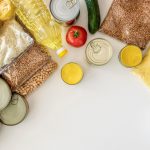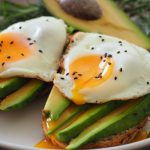Everybody seems to think whole grains are the best high fiber foods to get their bowels moving. They eat them constantly and hope they will instantly relieve the constipation that often plagues adults, both young and old.
So these foods fly off the racks of grocer’s shelves, whether they are in the form of bread, bagels, breakfast bars or cereals. Everyone wants more fiber in the form of whole grains!
What most people don’t realize is that the definition of a “whole grain” has nothing to do with fiber content. In fact, many whole grain products contain very little fiber.
The Most Popular Source of Fiber Isn’t the Best
The truth is, when we see something that says it has been “Made with Whole Grains,” it means there is some whole grain in the product, but you have no idea how much. It could be the tiniest amount – just enough to be able to say it on the label.
In reality, the product is likely to be mostly refined flour, which doesn’t have either the fiber or the nutrition you’re looking for from a whole grain.
To top things off, your body is not designed for grains. They could even be responsible for damaging the lining of your gut and contributing to leaky gut syndrome.
That’s because today’s whole grains aren’t anything like nature intended. They’ve been scientifically engineered and hybridized. And most of them contain gluten, which often triggers inflammation and contributes to constipation issues. Your body simply isn’t designed for them.
That being said, grains are not highest – nor are they the healthiest – source of fiber in your diet. So eating a bowl of whole grain cereal for breakfast… maybe a sandwich on whole-grain bread for lunch… isn’t going to meet your fiber needs.
Let me give you a pretty fair example…
Let’s Make Some Fiber Comparisons!
A cup of whole-grain Cheerios contains about 2.5 grams of fiber. That’s something like 6% to 10% of your recommended daily fiber intake (25-30 grams for women; 30-38 grams for men).
Well, one of my favorite high fiber breakfast replacements is a thick vanilla chia pudding. I make it before I go to bed so that is well-blended and ready to eat when I wake up in the morning.
It starts with about 6 ounces of vanilla bean coconut yogurt, which already accounts for about 4 grams of fiber. Then, I mix in some organic chia seeds and add some berries (blueberries, blackberries or raspberries). Next, I add a hand full of crushed walnuts, a little cinnamon and a few drops of vanilla. Then I let the flavors blend overnight.
By my calculations, when I add up the fiber content of the yogurt, chia seeds, berries and walnuts, my delicious breakfast concoction contains a ton of protein and at least 18 grams of fiber. Maybe more. Big difference, right?
It is little changes like this that can help keep you regular, and prevent you from twisting and straining on the toilet.
That is just one tip. There are SO many other ways to mix different foods together to boost your fiber intake.
For example, lentils, beans and other legumes are all great sources of fiber. You’ll find a hefty 15 or more grams of fiber in a single cup of cooked lentils, black beans or split peas. Chickpeas, lima beans, navy beans… all of them are extremely high in fiber. (My mind automatically runs toward hummus, bean dips and bean soups for snacks and lunches.)
Avocados, artichokes and green peas all have a high fiber content. Brussels sprouts, turnip greens, broccoli and acorn squash can also contribute to your daily fiber intake too. You can add all of these to your dinner plate.
Berries of all kinds can add more healthy fiber to your diet, especially blackberries, raspberries and blueberries. If you’re not fond of berries, coconut, pears, apples, apricots and figs also contain appreciable amounts of fiber. And seriously, who can pass up a great fruit and berry salad? They are great for both snacks and deserts.
And don’t forget your nuts and seeds. Pumpkin seeds, almonds, sesame seeds, pistachios, hazelnuts and others can all be added to your diet for increased fiber intake. The great thing about nuts and seeds is that they can be added to almost any dish you make.
All of these foods will contribute greatly to your daily fiber intake, help you poop better, and provide all of the other health benefits that come with eating a high fiber diet.
I also have a bonus recommendation for grain lovers.
If you stick with gluten-free grains like amaranth, millet, buckwheat and bulgur, you may still be able get the health benefits of these whole grains without the added risk of gluten-related constipation.
I like oats, too (with nuts, blueberries and coconut milk). Just regard oats with caution. If they were processed on the same equipment as grains that contain gluten, they may not be gluten-free.
SOURCES:
de Punder K, Pruimboom L. The dietary intake of wheat and other cereal grains and their role in inflammation. Nutrients. 2013 Mar 12;5(3):771-87.



